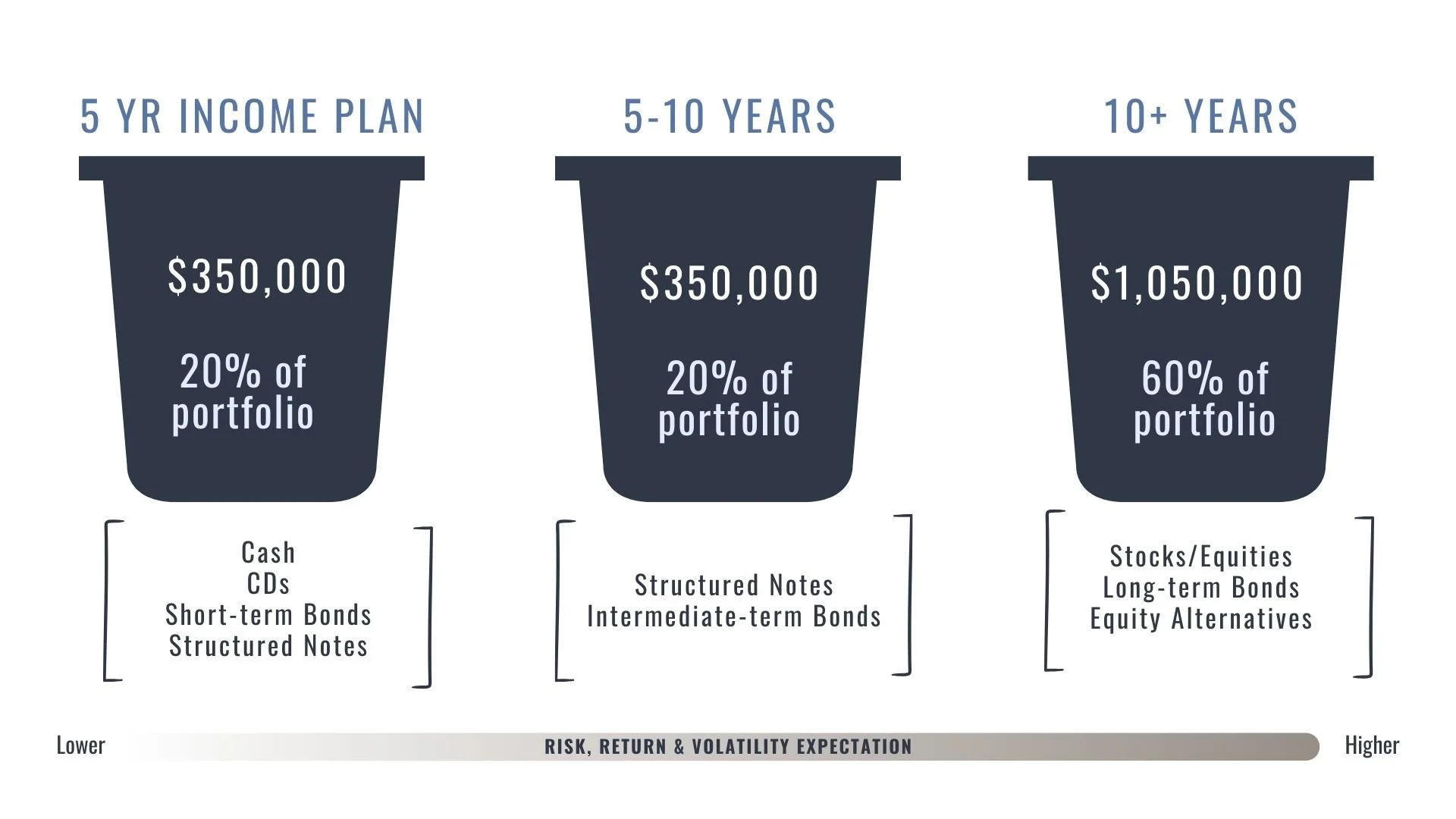5 Challenges in Retirement & How to Face Them
As retirement approaches, the desire for financial stability and peace of mind becomes paramount. Proper saving and investing are crucial components of retirement planning, but being aware of potential obstacles is equally important.
We see these fears and challenges and want to provide insight into the actionable strategies we use to help you face them head-on, ensuring a secure and fulfilling retirement.
Will my retirement savings last my entire life?
Living a long and fulfilling life is a goal for many, but it can pose a financial challenge in retirement.
Increased life expectancy makes the risk of outliving your retirement funds more substantial.
To help ensure your retirement savings will last as long as you need, a detailed plan with a spending plan, a goal withdrawal rate for your investment portfolio, and an effective plan for drawing from your Social Security benefit.
By delaying Social Security from age 67 to 70, you will see a 24% increase in your benefit for the rest of your life.
By delaying Social Security from an early withdrawal age 62 to 70, you will see a 54% increase in your benefit for the rest of your life.
Will my retirement savings keep up with inflation?
The ever-increasing cost of living, driven by inflation, is a persistent challenge for retirees.
Planning for retirement based on current expenses may leave you unprepared for future price hikes. To combat the impact of inflation, we always make recommendations and retirement plans based on the higher cost of living in mind. We plan for your everyday expenses to be higher in retirement than they are today, providing a buffer against unforeseen inflationary pressures.
How do I plan for taxes in retirement?
As you approach retirement, there are several tax-related considerations we need to keep in mind.
As advisors, we are hyper-aware of the tax implications when assisting clients as they withdraw funds from retirement accounts such as 401(k)s, IRAs, or pension plans. Different types of retirement accounts will have different tax treatments, and as you withdraw from each account, it is important to understand the full tax liability you can expect.
Before retirement, we develop a tax-efficient withdrawal strategy with internal and external accounts. This may involve withdrawing from different types of accounts in a way that minimizes your overall tax liability. Keeping open communication with us and your tax professional can be beneficial as a part of the plan.
How will my portfolio withstand market volatility as I need to withdraw funds?
The stock market's unpredictability can significantly impact your financial stability in retirement, especially if you withdraw in a down market with no plan. Diversifying your portfolio and exercising caution around withdrawals are effective strategies to mitigate market volatility, but one of the best ways is to assign a timeline to your money.
We have found one of the most effective ways to help reduce your risk with timing withdrawals is to plan when you will need what money.
We build and maintain Five Year Income Plans for all our current or soon-to-be retirees. Money that you need in the next five years should be held in lower-risk investments to reduce or eliminate sequence of return risk, or the risk you don’t get the returns needed at the right time in your retirement lifecycle. An effective retirement income plan allows you to navigate and survive down markets with more consistency and, ideally, without having to modify your withdrawals and income. Beyond that, the money allocated for longer-term needs will be invested for more growth because it will have more time in the market.
Below is an example $1,750,000 retirement portfolio and how much could be allocated to your income plan, intermediate needs, and long-term growth buckets.
I’m nervous about transitioning from saving into my retirement fund to spending from it.
As you navigate the complexities of retirement planning, a critical but often underestimated headwind awaits you: the transition from saving for retirement to spending your hard-earned nest egg. The mindset shift from accumulating wealth to utilizing it for day-to-day living can be both psychologically and financially challenging.
The transition from saving to spending in retirement marks the culmination of years of financial discipline and planning. While it can be daunting, approaching it with a well-thought-out strategy and embracing the new chapter of your life can lead to a more enjoyable and stress-free retirement experience.
The easiest way to comfortably make this transition is to make sure your withdrawal rate starts and stays in line.
The combination of a custom retirement income portfolio like a Five Year Income Plan with a reasonable withdrawal rate is going to give you the confidence to withdraw as needed and want to fulfill your retirement dreams. While the “rule of thumb” is a 4% withdrawal rate, there is so much more to this puzzle. Factors such as retirement age and life expectancy, pensions, Social Security, health insurance, spending needs vs. spending wants, etc., will all be critical factors in your initial and long-term withdrawal rate.
Below is an example of the math surrounding your total income need versus how much actually needs to be withdrawn each year from a $1,750,000 portfolio.
Retirement planning requires a comprehensive approach that goes beyond traditional saving and investing. Being aware of the headwinds of retirement and implementing strategic measures to address them is essential for achieving financial stability and independence.
As you approach and navigate your retirement, working together to craft a personalized plan that aligns with your goals and ensures a fulfilling retirement journey is important. Remember, awareness and proper planning are the keys to facing these challenges head-on and securing your retirement success!
All the best,
Shean



